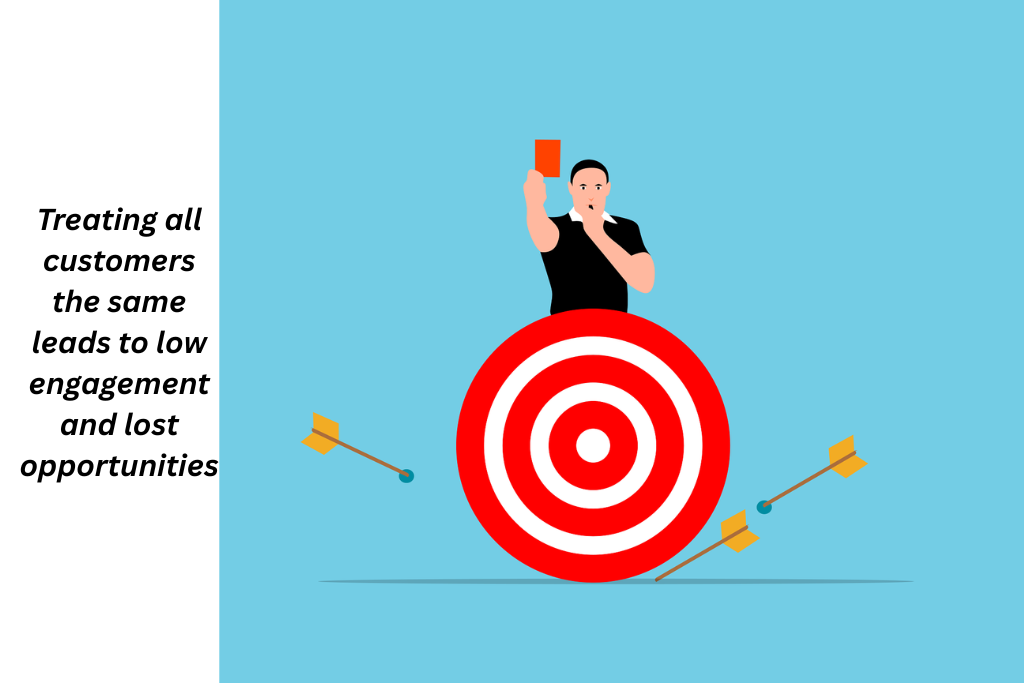
5 Personalization Mistakes SMEs Make (and How Machine Learning Fixes Them)
Small businesses understand that personalization is a competitive necessity, especially for SMEs. When markets are full of endless options, you should avoid personalization mistakes that affect business growth. Effective personalization grabs customer expectations in a shorter span and persuades them to take action. That’s why SMEs must take it seriously. You should avoid guesswork when creating broad personalization campaigns, and here, machine learning will help you.
Machine learning analyzes vast amounts of data in real-time and turns personalization into an unforgettable interaction. We discussed in previous articles about how machine learning in personalization is helping small businesses to achieve their goals. However, they did not realize when the under- or overdo it. To address this issue, today we will explore five common personalization mistakes that SMEs make. We will also discuss how machine learning can fix each one, so read till the end.
1: Treating All Customers the Same
When communicating, many SMEs treat all customers with the same approach. They send the same emails and push the same product recommendations for their entire audience. While it seems easier, it ignores the fact that every customer interacts with your business differently.
Some customers are first-time buyers, and some are loyal customers. At the same time, others engage only during sales events. Treating them all the same leads to missed opportunities to connect in meaningful ways.
These generic messages result in low engagement and poor conversion rates. Customers quickly understand that they are just like any other name on the mailing list. They lose interest, and the worst happens when to turn to your competitors who seem to understand them.
The Machine Learning Fix:
Machine learning solves this problem. Instead of manually grouping, it enables smart segmentation. Machine learning uses clustering algorithms to analyze patterns in behaviors and preferences. Like in your audience, there could be price-sensitive shoppers, seasonal offer lovers, or high-value repeat buyers. These models can identify micro-segments in your audience.
With these insights, SMEs can deliver targeted campaigns. For example, here’s how a machine learning powered engine does it:
- It automatically suggests complementary products to a repeat buyer
- It will send a limited-time discount message to a dormant customer
- Will promote new arrivals to someone who frequently browses but hasn’t purchased yet
This type of personalization feels natural to customers. They connect and engage with the brand, resulting in improved conversion rates. 
2: Over-Personalization That Feels Creepy
There is a fine line between helpful personalization and the unsettling one. Some SMEs push too far by using sensitive and irrelevant personal data. Just imagine that you looked at a product for once and just after that, received an email referencing that product. In the worst case, the email or message would mention personal details that you never shared. Will this situation make you feel understood, or will you feel like being watched? This is over-personalization, and it often comes from businesses that are trying to impress customers.
However, this approach quickly backfires, and such businesses will face consequences. When personalization crosses the line, customers start worrying about how much data the company has on them. How are they using that person’s data, and what if it gets hacked? This triggers privacy concerns and even churn. Customers opt to complain and leave for competitors who respect their boundaries.
The Machine Learning Fix:
Machine learning offers a way to achieve relevance without overstepping. It is called ethical personalization. Instead of getting insights from personally identifiable information (PII), it focuses on patterns of behavior. It does not target the exact name or location but analyzes anonymized interaction data. That way, personalization feels relevant but not intrusive.
3: Ignoring Real-Time Context
Many SMEs set up personalization rules. However, they forget them afterwards and rely on static data. They continue to work on what customers loved to purchase months ago. The problem is that customer preferences change quickly. Someone who bought a product last week might not need it again for months. When you still keep promoting the same item, it would be an outdated approach. Customers will take it as you are not paying attention to their current needs.
This lack of context results in irrelevant offers. These offers feel disconnected from the customer journey. For example, if you buy a laptop and keep receiving ads for the same laptop, then it will be a waste of marketing. The ads you must get are about the accessories or services that complement your purchased laptop. Such situations frustrate customers and ultimately lower conversion rates.
The Machine Learning Fix:
Machine learning offers real-time personalization. Its recommendation engines can analyze whether the customer is browsing a page or abandoning a cart. These engines also analyze the content that customers are engaging with and adjust messaging instantly. Predictive analysis also helps to fix this issue. It uses trends and patterns to predict what a customer is likely to need next.
4: Not Testing
SMEs treat personalization as a one-time setup. They design a campaign and define segments. After that, they leave it running for months or even for years. Though their assumptions worked once but instead of re-evaluating their effectiveness, they will keep it working. The customers’ behavior and market conditions change over time. If you do not test and refine your personalization strategies will fail to keep pace with changing demands.
The Machine Learning Fix:
Since machine learning thrives on continuous improvement, it can automatically compare different personalization approaches. Machine learning systems have built-in A/B testing capabilities to see which combinations work best.
5: Overlooking Multi-Channel Consistency
SMEs make this common mistake of keeping their personalization efforts to a single channel. They neglect how customers experience their brand elsewhere. For example, you put all your personalization efforts into email marketing and neglect other platforms. A customer might receive an email offer, and he finds it relevant. But when he visits the website of engage in social media, they sees generic content that does not align with that message. This disconnects the seamless journey. The inconsistent messaging across channels causes confusion and frustration. It also impacts customers’ overall follow-up experience on the website or app.
The Machine Learning Fix:
Machine learning is combined with unified customer data platforms to solve this issue on multiple touchpoints. Machine learning models can use a unified view to deliver consistent and context-aware personalization across all channels.





